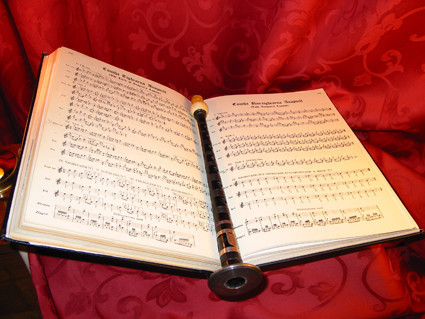
The set tunes for 2024 had two tunes which had ‘open’ toarluath and crunluath fosgailte movements, the Nameless tune from Angus MacKay set for the Gold Medal, and the MacNabs’ Gathering set for the Silver, the tunes appearing in the PS Book 3 on pages 148 and 149.
By Duncan Watson
There are about five or six other tunes which come to mind where this open fosgailte can occur on some B and C theme notes. The rhythm of the movement in the taorluath, should provide the rhythm of those in the crunluath.
In 1994, Seumas MacNeill sparked interest in an article, ‘A Strange Crunluath’, referencing MacKay’s Banner, a set tune that year. Seumas suggested that the way the movement was presented in the tune in the Piobaireachd Society’s Book 7, was misinterpreted from Angus MacKay.
Tongue in his cheek, he suggested that this may have been as a result of spasms by A Cameron (presumably Sandy Cameron), these spasms producing a stuttering or hiccup effect, resulting in the misinterpretation by the book’s editor, Archibald Campbell, Kilberry.
Archibald Campbell’s son, James, responded to Seumas refuting this, and the suggestion that his father had been plugging the ‘Cameron’ style of the movement against that of Angus MacKay.
Diplomatically, James indicated that his preference was the Angus MacKay presentation, as the crunluath timing matched that of the toarluath. He concluded, ‘Anyone who shares my preference should …… guard against any risk of incurring displeasure by naming Angus MacKay as his authority.’
My view is that pipers, judges and piobaireachd enthusiasts should develop an opinion of their own on whether there is misrepresentation of the movement in the PS books. However, when notation is committed to formal publication it takes on an authority; it can be regarded as gospel.
It should be noted that Archibald Campbell wrote the movement in slightly different ways in the tunes he edited, but none which resemble the rhythmic timing of the older source material.
The late Norman Matheson regularly visited Sutherland for deer stalking with James Ross Matheson. Afterwards they would retire to the home of Angus MacPherson, Invershin. Discussions on piobaireachd would stretch into the small hours.
One of the topics was the way the fosgailte taorluath and crunluaths were presented in the MacKays’ Banner in PS Book 7. Angus claimed that what appears in Angus MacKay’s book was the traditional way the movement was timed/played and that was what his father Calum Piobair played.
In MacKays’ Banner the movement is on C. In the Nameless and MacNabs it is on B. Whether B or C, the rhythm is the same. It does seem that what is in the PS Book is a misinterpretation of the way those movements should be played.
If we look at ‘Binneas is Boreraig’, the book based on the playing of Malcolm MacPherson, son of Angus, we see the rhythmic interpretation of the Strange Crunluath.
Significantly, the movement was also written this way prior to the publication of Angus MacKay’s 1838 book – in the MacArthur MacGregor MS and available in the book produced under the auspices of Glasgow and Aberdeen Universities several years ago.
This MS was written in 1820, and it is known that Angus MacKay made reference to it for his book and MS. It contains the tune the MacLean’s March and where those ‘strange crunluaths’ crop up again.
MacLean’s March is set for 2025 and it will be interesting to see how the competitors tackle it. Will they opt for Angus MacKay, MacArthur-MacGregor, Binneas or the early PS?
MacKay’s Banner appears in Donald MacDonald where it is called the White Flag. The corresponding movement suggests the stress should be on the first C and B, that note being a theme note. This seems to corroborate the timing portrayed in the MacArhur MacGregor MS.
In Ian McLennan’s book (completed by his son GS) the way in which the motif is written, while different to MacArthur and Angus MacKay, the rhythm is corroborative of MacArthur and MacKay.
Why did were expert pipers Robert Reid, RU Brown and RB Nicol play these movements as per the Piobaireachd Society? Brown and Nicol were taught to play them with the rhythm interpreted as per Angus MacKay. Brown indicated that John MacDonald, Inverness, their mentor, suggested that in a competition they should play what appears in the PS books, presumably to satisfy ill-informed judges.
Of course we are not faced with this dilemma nowadays and I understand that in the revision of its books being undertaken by the Society the way of writing ‘strange crunluath’ is being, or has been, re-examined.
That said I am aware of a player who felt he had to tell a judging panel at a games last summer what style he was playing in the Nameless tune referred to.
All the evidence shows that what is indicated by Binneas, MacArthur and MacKay is the traditional way of playing the movement.